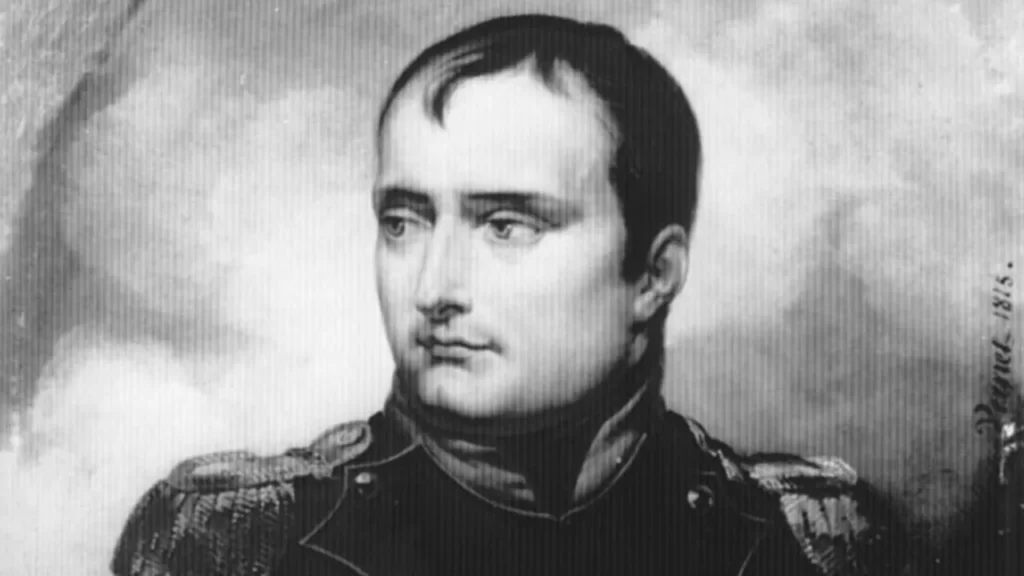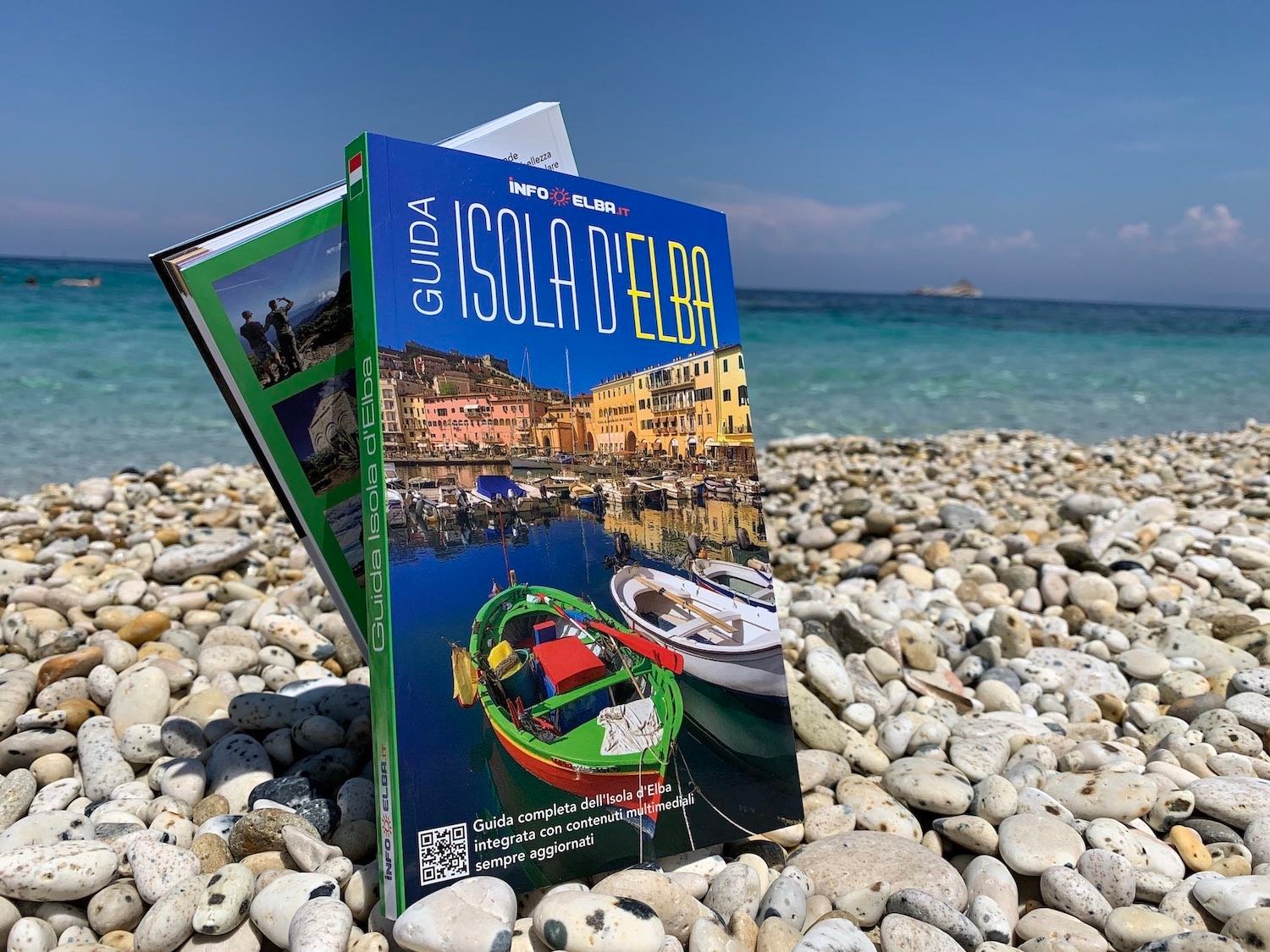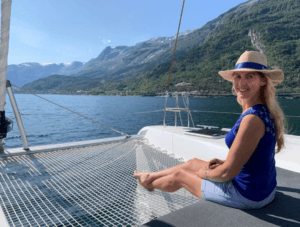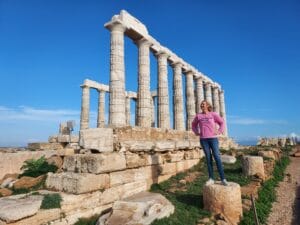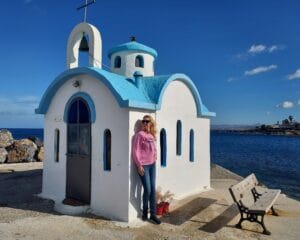Yes! The island of Elba has been on a my bucket list to see during our sailing trip: Why? There is something mysterious about it: the exile of Napoleon. And I don’t know that the island looks like 😉. I know that once I am on new ground. I start digging in the past, future, nature, people, etc. I like to really get to know an area. And I certainly was not disappointed with what I found and experienced on Elba: truly a beautiful and interesting island.
And we wouldn’t explore Elba alone, our friend Yvonne got on board in Pisa! It was a pleasure to see her again and so nice she wanted to join us for a week of sailing from Pisa to Elba to Corsica. This was the first part of the route: from Pisa to Cecina to Elba:
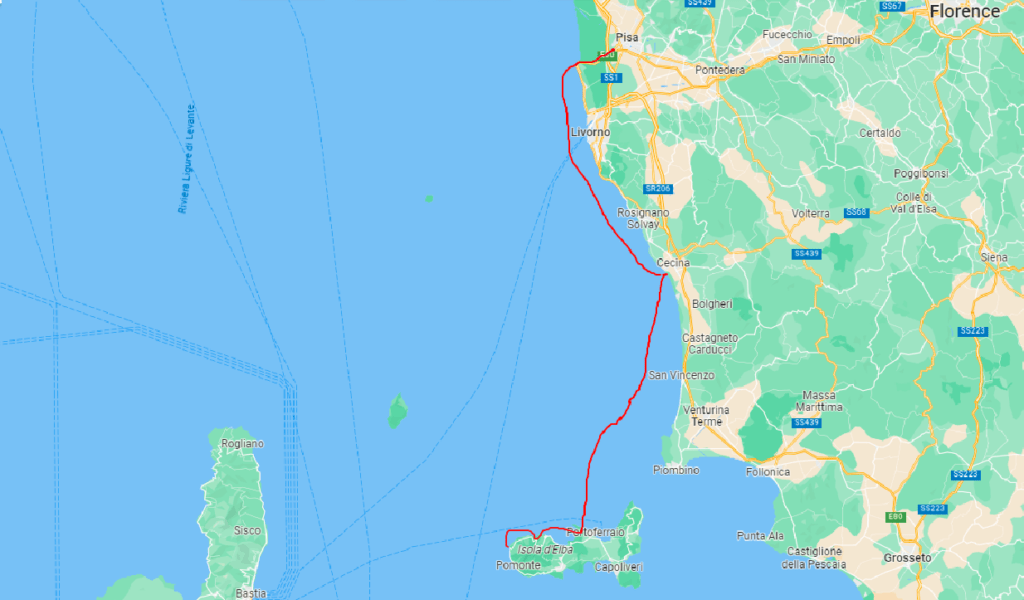

Cecina
We sailed to Cecina from Pisa in about 4 hours. The weather was still good here in the Mediterranean Sea. Cecina was a nice cozy beach resort, with fun bars and restaurants.


Sailing to Elba
Next day our big journey to Elba started: we had good winds and it took about 6 hours before we arrived in the middle of the northcoast of Elba, in the bay where the city of Portoferraio is situated.
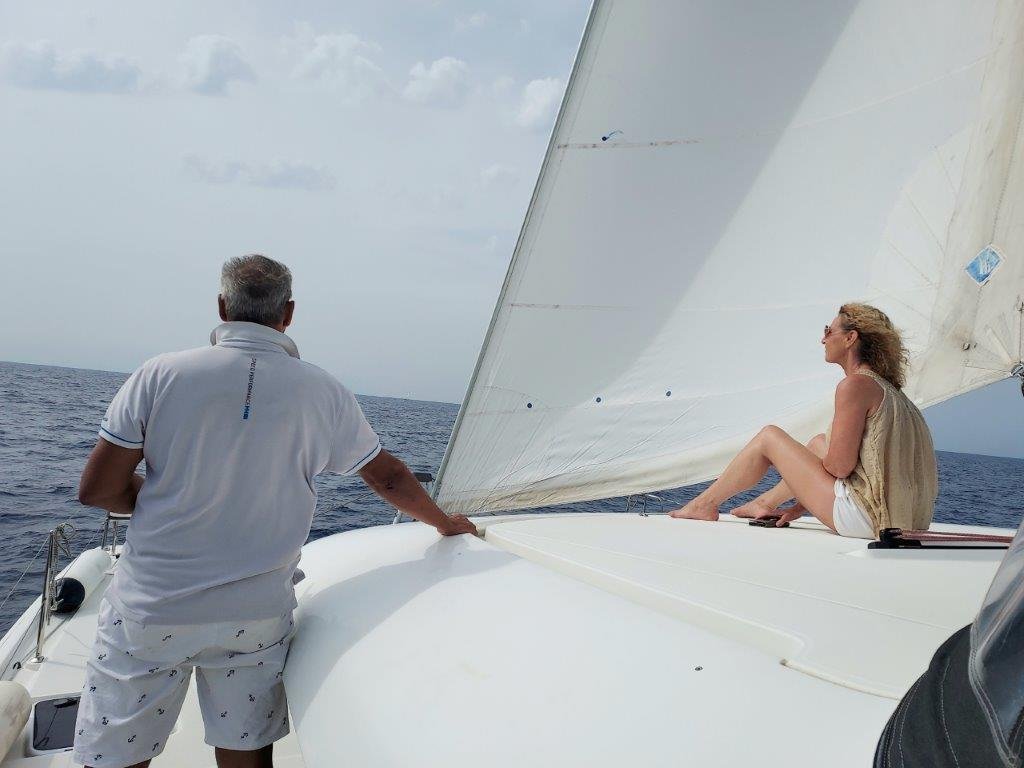
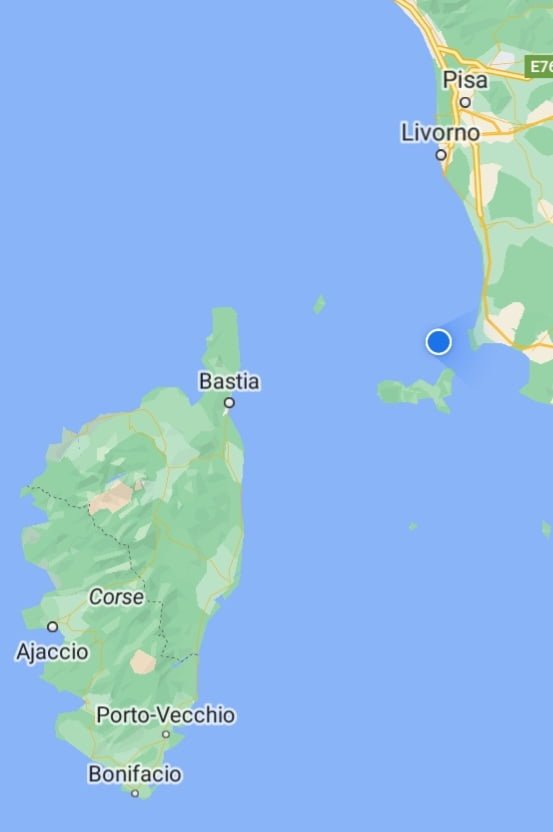
As we came closer to Elba and Portoferraio, it was beautiful to see the old historic town upon the hill!
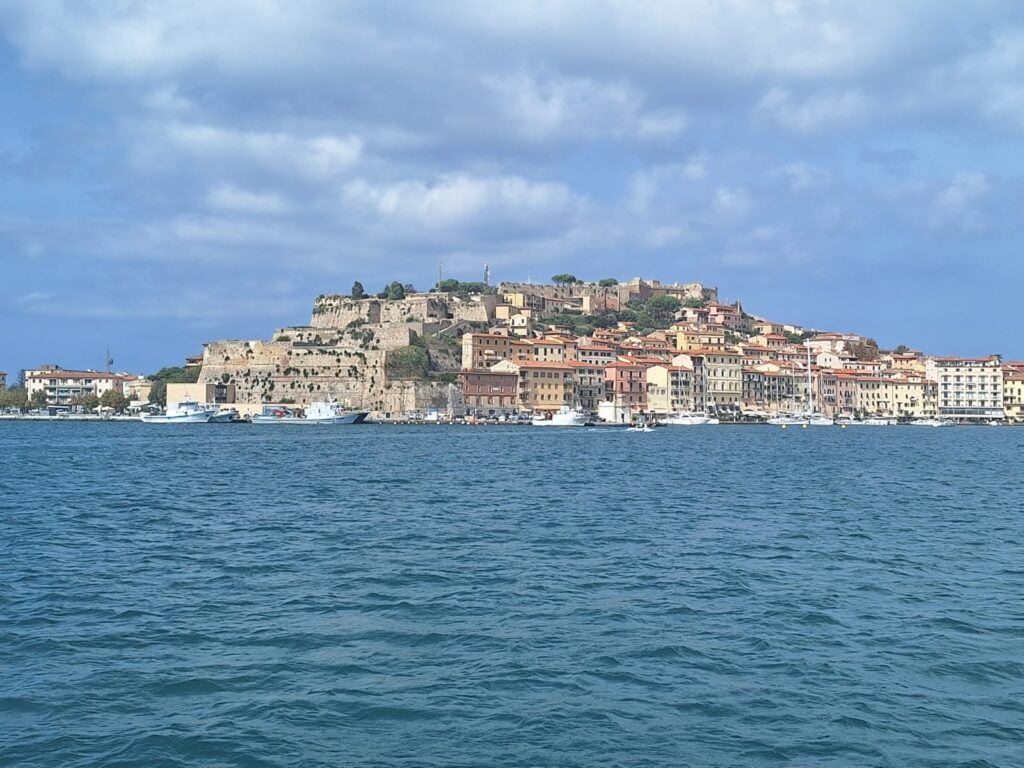
Tuscan archipelago
We knew that Elba is part of Italy, but never made the connection it is part of the province of Tuscany. Even more, Elba is one of the 7 islands which are called the Tuscan archipelago. Below you see a picture of the 7 islands, that run in a beautiful semi-circular circle.
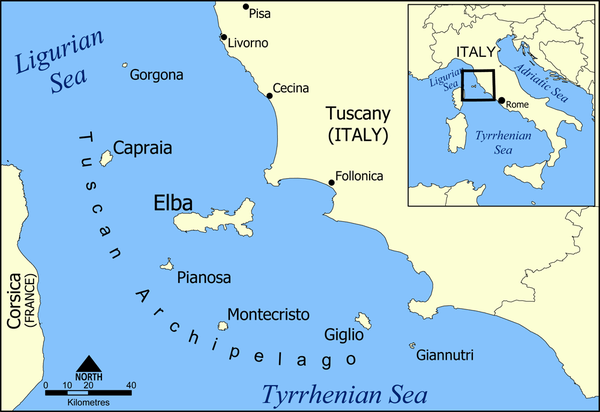
According to a legend, the pearl necklace of Venus, goddess of love and beauty, broke right above the Tyrrhenian Sea. Every pearl that touched the surface of the water turned into an island. Together these islands, Elba, Giglio, Giannutri, Capraia, Pianosa and Montecristo form the Tuscan archipelago
Portoferraio
Back to Portoferraio. The name of this city means iron port. It is the capital of Elba, almost 12.000 people live here which is almost half of the total population. Until recently, Portoferraio stored iron that was gathered on the other side of the island. A lot of ferryboats pass by here. They go to Livorno, Corsica, Sardinia or even Naples.


When we anchored our ship in front of Portoferraio, we took our dinghy and then started walking in the city. Immediately, we ran into a picture of Napoleon, the whole city is under the spell of Napoleon. It is there most famous inhabitant. I started reading about how he came to be banished here, what his life was like on Elba and how he escaped. I went from one surprise to another!

The exile of Napoleon
Napoleon, born at Corsica under the name of Napoleone di Buonaparte, was past his peak In 1813/1814 and his power diminished in Europe. It was March 31, 1814 when the armed forces of England, Prussia, Russia and Austria entered Paris and forced Napoleon to sign a treaty to abdicate the throne of France and was assigned the island of Elba as a principality.
On May 4, his arrival at the port of Portoferraio was received with great enthusiasm by the people of Elba, and his stay aroused great fervor on the island. Napoleon decided, before his stay, to restore some buildings and lived in Palazzina dei Mulini:


Napoleon was quickly joined in his yellow villa, by his charming Polish mistress Maria Walewska, his mother and his sister Paolina Borghese. The beautiful Paolette not only loved her brother, but also the social life of Elban. She brought the damsels, the seamstresses, the fashion, the gossip, the masked balls and the Parisian parties into the new little court. Placed flowers, bird cages, birds and all kinds of trinkets everywhere in the villa.
The port of Portoferraio experienced an unusual revival due to the influx of foreigners who wanted to meet the emperor and also the arrival of large quantities of merchandise and necessary foodstuffs for the court and the military.
Napoleon was well informed about the European political scene and knew that people wanted to position him differently. Napoleon secretly left Elba on February 26, 1815 – after less than a year of stay – at the end of a masked carnival ball at the Teatro dei Vigilanti in Portoferraio.
All these places (his Villa, the Teatro) we visited walking through Portoferraio.

At the end of this interesting historic walk, we sat down on a terrace and toasted Elba!

Continuing sailing along the coast of Elba
We had 2 more stops in Elba, we enjoyed the beautiful bays and the green countryside there. The friendly Italian atmosphere is really nice here! When we were at the most western tip of Elba we prepared to sail to Corsica.




More about our journey to Corsica in our next blog!
And what about Napoleon? From Elba to Waterloo in 100 days.
The Elban population is still very attached to the figure of Napoleon, every year on May 5 a soul mass is celebrated in the church of the Reverenda Misericordia of Portoferraio, for more than 200 years already!
What happened to Napoleon after he escaped from Elba? A period which is called ‘100 days’ started.
After successfully escaping in a boat from Elba, he came ashore in the south of France, near Cannes, and here began a triumphant journey to Paris. We now call this the Route Napoleon. The charmismatic self-proclaimed emperor gained more and more followers along the way, and the army that had come out to stop him enthusiastically joined him. And 2 weeks later, Napoleon was back on the throne in Paris, at a time when there was much discontent in France and a revolution was looming.
The emperor had a new constitution drawn up, which, however, did not differ essentially from the old one, and only allowed a few additional individual freedoms. Napoleon’s absolute power remained unaffected. That disappointed a lot of people.
In addition, Napoleon knew that the other European powers would not accept his return and decided to quickly go on the offensive himself and achieve a decisive victory before his old enemies could organize themselves. He did not have the time to raise an army, but managed to recruit 120,000 men. His men included many veterans, including experienced officers, but also poorly trained young people.
At Waterloo he lost a decisive battle. That was the irrevocable end of Napoleon Bonaparte. The great conqueror of Europe surrendered a month later. He attempted to escape to the United States, but ultimately surrendered to the British, “the most generous of my enemies”, as he called them. Napoleon was then exiled to the island of Saint Helena in the Atlantic Ocean, 2.000 km off the coast of Angola, where he died 6 years later in 1821 being 51 years old (1769-1821).
